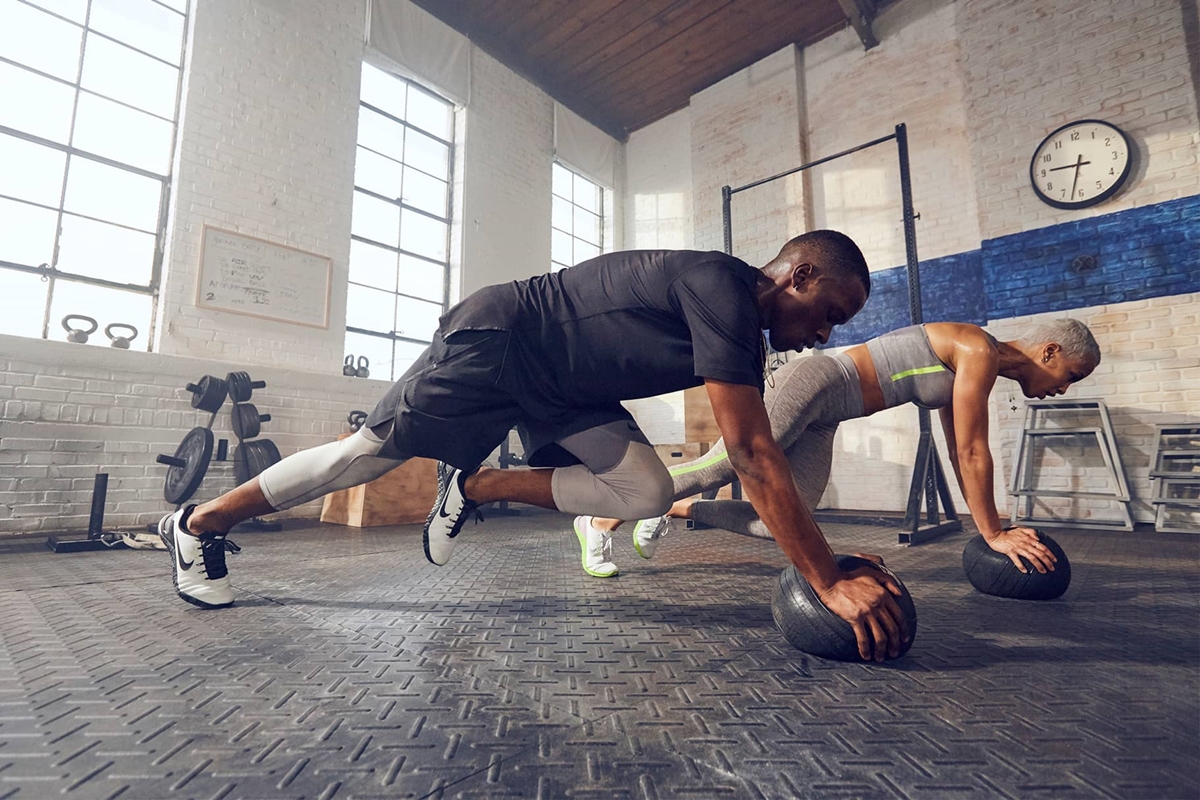Home>Misc>Featured>Why Is My Cholesterol High When I Exercise


Featured
Why Is My Cholesterol High When I Exercise
Published: October 4, 2023
Discover why your cholesterol levels may be high even when you exercise regularly. Get featured insights and tips to manage your cholesterol effectively.
Introduction
Welcome to the world of fitness and exercise! You’ve taken the first step towards a healthier lifestyle, but you may be puzzled by one thing – why is your cholesterol high when you exercise? It’s a valid question, as exercise is touted as one of the best ways to improve cardiovascular health and lower cholesterol levels. So, why does it seem like your efforts aren’t paying off?
Before we delve into the reasons for elevated cholesterol levels during exercise, let’s gain a basic understanding of cholesterol itself. Cholesterol is a waxy substance that is found naturally in your body. It plays a vital role in various bodily functions, including the production of hormones and cell membranes. However, when cholesterol levels become too high, it can lead to serious health issues, such as heart disease.
Exercise is generally known to reduce cholesterol levels and improve cardiovascular health. Regular physical activity stimulates the production of high-density lipoprotein (HDL) or “good” cholesterol, which helps remove low-density lipoprotein (LDL) or “bad” cholesterol from your bloodstream. However, for some individuals, their cholesterol levels may temporarily spike during exercise.
There are several factors that contribute to high cholesterol levels when you exercise. These include genetics, diet, medical conditions, and medications. It’s essential to understand these factors to effectively manage your cholesterol levels while engaging in physical activities.
In this article, we will explore the reasons behind elevated cholesterol levels during exercise and how you can address them. We will also discuss the different types of exercise that can have varying effects on cholesterol levels. Furthermore, we will delve into the role of diet, medical conditions, and medications in influencing your cholesterol levels. Finally, we will provide you with useful tips to help you manage your high cholesterol while continuing to exercise.
So, if you’re ready to understand why your cholesterol might be high when you exercise and learn strategies to overcome this challenge, let’s dive in!
Understanding Cholesterol
Before we delve into the factors that may contribute to high cholesterol levels during exercise, let’s take a moment to understand what cholesterol is and how it affects our health.
Cholesterol is a waxy substance that is produced naturally in our bodies. It is essential for various functions, including the production of hormones and the formation of cell membranes. Our bodies can produce all the cholesterol it needs, but we also get cholesterol from the foods we eat.
Cholesterol travels through our bloodstream in lipoproteins, which are small particles composed of fat (lipids) and proteins. There are two main types of lipoproteins: low-density lipoprotein (LDL) and high-density lipoprotein (HDL).
LDL cholesterol is often referred to as “bad” cholesterol because it can build up in the walls of our arteries, leading to the formation of plaque. This can restrict blood flow and increase the risk of heart disease. On the other hand, HDL cholesterol is known as “good” cholesterol because it helps remove excess LDL cholesterol from our bloodstream, reducing the risk of heart disease.
Cholesterol levels are measured using a blood test that evaluates the levels of LDL, HDL, and other lipid components. Optimal cholesterol levels may vary depending on your age, gender, and overall health, but in general, it is recommended to keep LDL cholesterol levels low and HDL cholesterol levels high.
Elevated cholesterol levels, specifically high LDL cholesterol levels, can be concerning as they increase the risk of heart disease. Lifestyle factors, such as poor diet, lack of exercise, smoking, and excess weight, can contribute to high cholesterol levels. Additionally, certain medical conditions and genetics can also play a role in determining cholesterol levels.
Now that we have a basic understanding of cholesterol and its impact on our health, let’s explore how exercise can influence our cholesterol levels, both positively and, in some cases, temporarily negatively.
Exercise and Cholesterol Levels
Regular exercise is often viewed as a key component of a healthy lifestyle, as it offers numerous benefits for our overall well-being. When it comes to cholesterol management, exercise can play a crucial role in improving our lipid profile.
Engaging in physical activity has been shown to increase levels of high-density lipoprotein (HDL) cholesterol, or “good” cholesterol, while reducing levels of low-density lipoprotein (LDL) cholesterol, or “bad” cholesterol. This is a desirable outcome as high levels of LDL cholesterol can contribute to the development of plaque buildup in the arteries, increasing the risk of heart disease.
Regular exercise helps to stimulate the enzymes responsible for moving LDL cholesterol from the bloodstream to the liver, where it can be eliminated from the body. Furthermore, exercise can enhance the function of the endothelium, the inner lining of blood vessels, leading to improved blood flow and reduced risk of blood clots.
The American Heart Association recommends at least 150 minutes of moderate-intensity aerobic exercise or 75 minutes of vigorous-intensity aerobic exercise per week for adults. This can include activities such as brisk walking, jogging, cycling, swimming, or participating in sports.
While the overall benefits of exercise on cholesterol levels are well-established, it is important to note that cholesterol levels can temporarily increase during and immediately after exercise for some individuals. This phenomenon, known as exercise-induced hypercholesterolemia, can be observed in both healthy individuals and those with elevated cholesterol levels.
The temporary increase in cholesterol levels during exercise is believed to be attributed to the mobilization of fatty acids into the bloodstream to provide energy for the muscles. As a result, the liver may produce more LDL cholesterol to transport these fatty acids. However, it is important to keep in mind that this temporary spike in cholesterol levels is not a cause for alarm, as the long-term benefits of exercise on cholesterol management far outweigh this short-term effect.
The impact of exercise on cholesterol levels can vary from person to person. Some individuals may experience a significant reduction in LDL cholesterol levels with exercise, while others may see a more modest improvement. Factors such as genetics, diet, and other lifestyle choices can influence how exercise affects cholesterol levels in each individual.
In the next section, we will explore the factors that can contribute to elevated cholesterol levels during exercise and how you can address them to optimize the benefits of physical activity for your cholesterol management.
Factors Affecting Cholesterol Levels During Exercise
While exercise is generally associated with improved cholesterol levels, there are several factors that can influence how our cholesterol levels respond to physical activity. Understanding these factors can help shed light on why your cholesterol may be high when you exercise and how you can address it.
Genetics: Our genetic makeup can play a significant role in determining our cholesterol levels. Some individuals may have a genetic predisposition to higher cholesterol levels, making it more challenging to achieve optimal levels through exercise alone. In such cases, medication or lifestyle modifications may be necessary to manage cholesterol levels effectively.
Diet: The food we eat can have a profound impact on our cholesterol levels. A diet high in saturated and trans fats can raise LDL cholesterol levels, while a diet rich in fruits, vegetables, whole grains, and lean proteins can help lower LDL and increase HDL cholesterol levels. It’s important to maintain a balanced, heart-healthy diet alongside exercise for optimal cholesterol management.
Weight: Excess weight, particularly around the waistline, can contribute to higher LDL cholesterol levels. Engaging in regular exercise can help with weight management and contribute to improved cholesterol levels. However, it’s important to note that weight loss alone may not be sufficient to lower cholesterol levels, and other factors, such as genetics and diet, may need to be addressed.
Lifestyle choices: Unhealthy lifestyle habits, such as smoking and excessive alcohol consumption, can negatively impact cholesterol levels. Smoking can lower HDL cholesterol levels and increase the risk of heart disease, while excessive alcohol consumption can raise triglyceride levels and contribute to higher LDL cholesterol. Quitting smoking and moderating alcohol intake can significantly improve cholesterol levels.
Stress: Chronic stress can affect cholesterol levels by increasing the production of cortisol, a hormone that can raise LDL cholesterol and triglyceride levels. Engaging in regular exercise can help reduce stress levels and contribute to better cholesterol management. Incorporating stress-reducing activities like meditation or yoga alongside exercise can be beneficial.
Medications: Certain medications, including hormone replacement therapy, corticosteroids, and beta-blockers, can influence cholesterol levels. It’s important to consult with your healthcare provider about the potential impact of medications on your cholesterol and work together to find the best approach for managing cholesterol while exercising.
These factors highlight the complexity of cholesterol management and how it can be influenced by various factors. While exercise plays a crucial role in improving cholesterol levels, it may not be the sole solution for everyone. By addressing these factors and adopting a holistic approach that combines exercise with a healthy lifestyle, diet modifications, and, if necessary, medications, you can optimize your cholesterol management efforts.
Types of Exercise and their Impact on Cholesterol Levels
Not all exercises are created equal when it comes to their impact on cholesterol levels. Different types of exercise can have varying effects on our lipid profile. Understanding these effects can help you tailor your exercise routine to optimize your cholesterol management efforts.
Aerobic Exercise: Aerobic exercises, such as brisk walking, jogging, cycling, swimming, and dancing, have been shown to have significant benefits for cholesterol management. These exercises increase heart rate and breathing, promoting cardiovascular fitness and improving overall lipid profile. Regular aerobic exercise can lower LDL cholesterol levels and increase HDL cholesterol levels.
Resistance Training: Resistance training, also known as strength training or weightlifting, focuses on building muscle strength and endurance. While resistance training may not directly impact cholesterol levels, it can contribute to improved overall cardiovascular health by increasing muscle mass, boosting metabolism, and reducing body fat. Combining resistance training with aerobic exercise can enhance the benefits for cholesterol management.
High-Intensity Interval Training (HIIT): HIIT workouts involve short bursts of intense exercise followed by brief recovery periods. This type of exercise has gained popularity due to its time efficiency and potential for cardiovascular fitness improvement. HIIT has been shown to be effective in lowering LDL cholesterol levels and increasing HDL cholesterol levels, making it a valuable option for cholesterol management.
Flexibility and Stretching: While flexibility exercises, such as yoga and stretching, may not directly impact cholesterol levels, they offer numerous benefits for overall health and well-being. These exercises can help reduce stress, improve circulation, enhance posture, and increase mobility, all of which contribute to cardiovascular health and complement other forms of exercise for cholesterol management.
Cross-Training: Cross-training involves incorporating a variety of exercises into your routine, combining aerobic activities, resistance training, and flexibility exercises. Cross-training can provide multiple benefits, including improved cardiovascular fitness, increased muscle strength, and enhanced flexibility. By diversifying your workouts, you can maximize your cholesterol management efforts and enjoy a well-rounded fitness routine.
Duration and Intensity: The duration and intensity of your workouts can also influence their impact on cholesterol levels. Generally, longer durations of moderate-intensity exercise are recommended for optimal cholesterol management. However, even shorter bouts of high-intensity exercise or interval training can be effective in improving overall cardiovascular health. It’s important to find a balance that works for you and gradually increase the intensity and duration of your workouts over time.
Incorporating a combination of aerobic exercise, resistance training, flexibility exercises, and cross-training into your routine can yield the best results for cholesterol management. Aim for at least 150 minutes of moderate-intensity aerobic exercise per week, along with two or more days of strength training and flexibility exercises.
Now that we understand how different types of exercise can impact cholesterol levels, let’s explore the role of diet in cholesterol management while exercising.
The Role of Diet in Cholesterol Management During Exercise
When it comes to managing cholesterol levels, exercise alone is not enough. A healthy and balanced diet plays a vital role in supporting the benefits of exercise and optimizing cholesterol management. Let’s explore the key dietary factors to consider.
Reduce Saturated and Trans Fats: Saturated and trans fats are known to raise LDL cholesterol levels. Limit consumption of foods high in these fats, such as fatty meats, full-fat dairy products, fried foods, and commercially baked goods. Opt for lean sources of protein, low-fat or fat-free dairy products, and choose healthier cooking methods like grilling or baking.
Increase Fiber Intake: Fiber-rich foods can help lower LDL cholesterol levels. Include plenty of fruits, vegetables, whole grains, legumes, and nuts in your diet. These foods are not only high in fiber but also provide essential nutrients and antioxidants that support cardiovascular health.
Choose Healthy Fats: Not all fats are bad for cholesterol levels. Replace saturated and trans fats with healthier fats like monounsaturated fats found in olive oil, avocados, and nuts, and polyunsaturated fats found in fatty fish, flaxseeds, and walnuts. These fats can help raise HDL cholesterol levels and support overall heart health.
Include Omega-3 Fatty Acids: Omega-3 fatty acids, primarily found in fatty fish like salmon, tuna, and mackerel, have been shown to have beneficial effects on cholesterol levels. If you don’t consume fish regularly, consider incorporating other sources of omega-3s, such as flaxseeds, chia seeds, or walnuts.
Limit Added sugars and Refined Carbohydrates: Foods high in added sugars and refined carbohydrates can raise triglyceride levels and lower HDL cholesterol levels. Minimize consumption of sugary drinks, sweets, white bread, pasta, and processed snacks. Opt for whole grain options and satisfy your sweet tooth with naturally sweetened fruits.
Control Portion Sizes: Even healthy foods can contribute to weight gain and elevated cholesterol levels if consumed in excess. Pay attention to portion sizes to maintain a healthy caloric intake and prevent overeating. Include a variety of foods from different food groups to ensure a well-balanced and nutritious diet.
Stay Hydrated: Drinking an adequate amount of water is essential for overall health, including cholesterol management. Staying hydrated supports proper blood circulation, aids in digestion, and helps maintain optimal body functions.
Incorporating these dietary recommendations alongside regular exercise can optimize your cholesterol management efforts. Working with a registered dietitian or nutritionist can provide personalized guidance and ensure you are making the right dietary choices for your specific needs.
Now that we have explored the role of diet in cholesterol management during exercise, let’s uncover the potential influence of medical conditions and medications on cholesterol levels while we exercise.
Medical Conditions and Medications that Influence Cholesterol Levels during Exercise
When it comes to managing cholesterol levels during exercise, it’s essential to consider the influence of underlying medical conditions and medications. Certain health conditions and medications can impact cholesterol levels, potentially affecting how they respond to physical activity. Let’s explore some of these factors.
Thyroid Disorders: Conditions such as hypothyroidism or an underactive thyroid can lead to elevated cholesterol levels. Thyroid hormones play a crucial role in regulating metabolism, including cholesterol metabolism. If you have a thyroid disorder, it’s important to work with your healthcare provider to ensure optimal thyroid function and manage cholesterol levels effectively.
Diabetes: Diabetes, specifically type 2 diabetes, is associated with higher cholesterol levels. Individuals with diabetes may have higher levels of LDL cholesterol and lower levels of HDL cholesterol. Regular exercise is highly recommended for diabetes management, as it can help improve insulin sensitivity and overall cardiovascular health.
Liver Disease: Certain liver diseases, such as nonalcoholic fatty liver disease (NAFLD), can lead to abnormalities in cholesterol metabolism. This can result in elevated LDL cholesterol and triglyceride levels. Exercise can be beneficial for individuals with liver disease, as it can help improve insulin resistance and support liver health.
Kidney Disease: Chronic kidney disease (CKD) can have an impact on cholesterol levels. Abnormalities in kidney function can affect the metabolism and clearance of cholesterol, leading to elevated LDL cholesterol levels. Regular exercise, alongside appropriate medical management, can help improve overall cardiovascular health in individuals with CKD.
Medications: Certain medications may influence cholesterol levels, either directly or indirectly. For example, corticosteroids and some beta-blockers can raise LDL cholesterol levels. Hormone replacement therapy (HRT) in women may also affect cholesterol levels. It’s important to work closely with your healthcare provider to monitor cholesterol levels and adjust medications as necessary for optimal cholesterol management.
It’s crucial to communicate with your healthcare provider about any medical conditions or medications that may impact your cholesterol levels. They can provide guidance on managing cholesterol while exercising and determine the best approach for your specific situation.
By having a comprehensive understanding of the influence of medical conditions and medications, you can make informed decisions and take necessary precautions to manage your cholesterol levels effectively while engaging in physical activity.
Now, let’s move on to some practical tips for managing high cholesterol while exercising.
Tips for Managing High Cholesterol while Exercising
Managing high cholesterol levels while exercising requires a comprehensive approach that combines lifestyle modifications, exercise strategies, and mindful choices. Here are some practical tips to help you effectively manage your cholesterol levels:
1. Consult with your healthcare provider: Before starting any exercise program, it’s important to consult with your healthcare provider, especially if you have underlying medical conditions or are taking medications that may influence cholesterol levels. They can provide personalized guidance and recommend exercise recommendations specific to your needs.
2. Follow a heart-healthy diet: Adopting a diet that focuses on lean proteins, whole grains, fruits, vegetables, and healthy fats can support your cholesterol management efforts. Avoid saturated and trans fats, minimize added sugars, and control portion sizes. Work with a registered dietitian to create a personalized meal plan that aligns with your cholesterol goals and exercise routine.
3. Engage in regular aerobic exercise: Aim for at least 150 minutes of moderate-intensity aerobic exercise per week. This can include activities such as brisk walking, jogging, cycling, swimming, or dancing. Regular aerobic exercise can help lower LDL cholesterol levels and increase HDL cholesterol levels.
4. Incorporate strength training: Include strength training exercises at least two days a week. Resistance training can help build muscle mass, increase metabolism, and improve overall cardiovascular health. It can also complement aerobic exercise in managing cholesterol levels.
5. Stay consistent with your workouts: Consistency is key when it comes to managing cholesterol levels. Aim to exercise on a regular basis and make it a part of your daily or weekly routine. Find activities that you enjoy and make exercise a fun and enjoyable experience.
6. Monitor and track your progress: Keep a record of your cholesterol levels and track your progress over time. Regularly check in with your healthcare provider to assess your cholesterol levels and adjust your exercise and treatment plan if necessary.
7. Manage stress levels: Chronic stress can impact cholesterol levels. Incorporate stress-reducing practices such as meditation, deep breathing exercises, or yoga alongside your exercise routine to promote overall well-being and support cholesterol management.
8. Be patient and persistent: Lowering cholesterol levels takes time and consistent effort. Stay dedicated to your exercise routine, follow a healthy diet, and maintain a positive mindset. Celebrate small achievements along the way and focus on the long-term benefits of managing your cholesterol levels.
Remember, managing cholesterol levels is a lifelong commitment. By incorporating these tips into your lifestyle and actively working towards your cholesterol management goals, you can improve your overall cardiovascular health and enjoy the benefits of a healthier lifestyle.
Now that we’ve covered the tips for managing high cholesterol while exercising, let’s wrap up with a recap of what we’ve learned.
Conclusion
Managing high cholesterol levels while exercising requires a multifaceted approach that combines lifestyle modifications, exercise strategies, and dietary choices. Regular exercise has been shown to improve cholesterol levels by increasing HDL cholesterol (the “good” cholesterol) and reducing LDL cholesterol (the “bad” cholesterol). However, it’s important to understand that cholesterol levels can temporarily spike during and immediately after exercise for some individuals.
Factors such as genetics, diet, medical conditions, and medications can influence how cholesterol levels respond to exercise. By addressing these factors and adopting a holistic approach, you can optimize your cholesterol management efforts while engaging in physical activities.
Some key factors to consider include following a heart-healthy diet that focuses on lean proteins, whole grains, fruits, vegetables, and healthy fats. Engaging in regular aerobic exercise, incorporating strength training, being consistent with your workouts, and managing stress levels are also crucial elements of effective cholesterol management while exercising.
Remember to consult with your healthcare provider, especially if you have underlying medical conditions or are taking medications that can impact cholesterol levels. They can provide personalized guidance and help create a tailored exercise and treatment plan.
Managing high cholesterol levels is a long-term commitment, and patience and persistence are key. By incorporating these tips into your lifestyle, you can optimize your cholesterol management efforts and improve your overall cardiovascular health.
So, keep up the exercise routine, maintain a healthy diet, stay consistent, and monitor your progress along the way. With these strategies and a proactive approach, you can successfully manage your high cholesterol levels while embracing a healthier and more active lifestyle.









